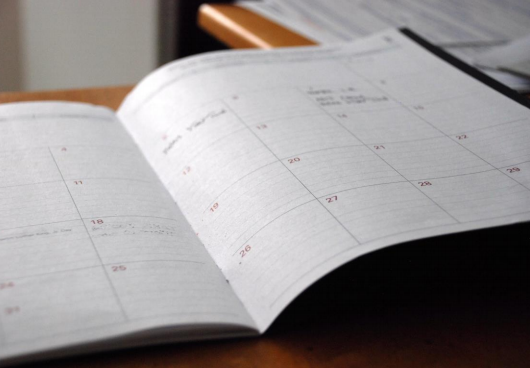Pro Painting Tip: Set Goals With Your Painting

One huge thing in life that makes many of us afraid is uncertainty. Fear of the unknown can stunt our lives. We must be careful to prevent this from happening both in our lives and in our artistic work! One thing you can do to help eliminate uncertainty is set goals! You need to know exactly where you want to go and how you’re going to get there. That way you have something concrete to work towards instead of abstractly telling yourself "I want to get better!" What does that even mean? Figure out your goal and shoot for it!
“Inspiration does exist, but it must find you working.” –Pablo Picasso
“The most important thing about art is to work. Nothing else matters except sitting down every day and trying.” –Steven Pressfield

Against the Odds
In a small house near Helena, Montana, she woke up every day to draw, paint, and create in the early morning before the sun rose. As a pioneering mom living on a ranch in Montana through the Great Depression, she had an unrelenting desire to provide and send her kids to college. With her goal in front of her, she rose before the sun every day to illustrate books and create comic strips for nationally syndicated papers. And you know what? She accomplished her goal. Her name was Fanny Y. Cory, and she was my great-grandmother.

Why Goals?
We need to have goals in art. But why? If painting is something you enjoy, why would you want to set aside time and force yourself to do it? Because, like any skill you want to become good at, you have to have a painting practice in order to get better. As Harley Brown said, “[Confidence] cannot come cheaply. It’s not a freebie. Many things in life are, but confidence is not one of them.”
It Takes Effort
Remember how long it took to learn how to downhill ski, dance the tango, or bake that perfect soufflé? Painting is no different. It requires practice. If we want to get better, then we can’t let ourselves believe we won’t have to work at it. The awesome thing is that if we are doing something we enjoy, it won’t feel like work at all. However, it still takes discipline. If you can figure out how to carve out twenty minutes or an hour a day to watch a painting lesson online or to work on a drawing or painting, it will make a huge difference. If my great-grandma didn’t have a goal or set up a regular practice to reach it, there is no way she would have achieved what she did.

But what does it mean to have a painting practice? Does that mean to wake up before the sun every day? Or spend all day toiling away like the old masters? It will be different for everyone depending on your goals. Most of us lead busy lives with a myriad of competing responsibilities, and our desires with art vary. For you, painting might be a fun hobby. It might be something you enjoy doing with others, or maybe it’s your quiet escape. You might simply enjoy the process. Or maybe you dream of being a full-time artist.
What Is Your Goal?
Knowing what you want out of a painting practice is key to deciding how to go about creating one. Is your goal to master acrylic painting and sell your artwork online or in galleries? Is your goal to become proficient in multiple painting mediums: watercolor, acrylic, oil, gouache, egg tempura. Are you interested in painting for your personal enjoyment or to improve your mental health? Do you want to meet new people by joining painting groups to wrap painting into your social life? Do you want to learn how to paint outside? There is no right or wrong answer. It is personal to you, but it’s still important to answer this question. What are your goals regarding your ventures in painting?
Get Your Calendar Out

Once you’ve established what your goals are, you can begin to lay out a plan for what your painting practice should ideally look like. This is a practical way I always encourage new members of Acrylic University. If we want to grow, we need to plan for it. So, create a list or a chart with daily, weekly, or monthly goals for your painting practice. Schedule specific times when you’ll paint and then create appointments on your calendar. If something comes up, reschedule that appointment the same way you would any other commitment.
A Story of Determination
I remember a story one of my early instructors, Robert Genn, shared in a workshop. He had just graduated from art school. He wanted to be a professional artist but didn’t have any galleries or contacts and very limited money. He had a studio and a dream. And a girlfriend. He decided he would pour everything into his art. For six months, he locked himself in his studio. He ate rice and beans and painted. He focused solely on his goal. After a week without any contact, his girlfriend came over and knocked on his door. He could see her silhouette in the frosted glass window, but instead of opening the door, he hid around the corner so she wouldn’t see his shadow moving around or hear anything. After a few minutes of knocking, she gave up. She came back a few more times to reach him, but after two weeks, she had given up. He never saw her again.
Did It Work?
Now that’s a pretty extreme example (and, to be clear, I’m not advocating doing that!), but it does show what it can look like to have a goal and really work toward it. But the real question is, did it work? Did he make his goal? Well, at the end of the six months, he laid out his hundred plus paintings so he could view them all at once. He chose what he considered his ten best. He burned the rest. Then he took the top ten to a gallery, left a note with them, and walked away. The next day, they called wanting to represent him. He went on to become one of the most sought-after Canadian artists of all time and has influenced thousands of other artists.

Unique Person, Unique Goals
Like Fanny Y. Cory, Robert Genn had a goal, and because he worked toward it, he did a lot. Imagine if he had never set any goal in art. As they say, “If you aim at nothing, you’ll hit it every time.” Your goal does not need to be the same as Robert Genn’s goal. Or mine. Or anyone else’s. In fact, it shouldn’t be. You are yourself, and your goals can be unique. The point is this: Creating goals for yourself will benefit you and spur you on to greater growth and enjoyment of painting.
Action Steps
Once you’ve determined what your goals are, you’ll want to create a concrete plan for how you’ll reach them. If you want to better understand a new medium, is there a class you can enroll in or a mentor you can work with? If socializing is a part of your goal, can you schedule a group trip to a museum or an art show? Maybe you can coordinate to paint plein air with a group? Your goals can be broken down into steps, too. If you want to enjoy painting (that’s your goal), and you’re finding you’re frustrated because you are having a hard time mixing colors, you can set some small goals related to that. You can take a course or read a book. Or practice mixing colors on your palette. You can set a goal to do ten color studies (small practice paintings) in the next month.
Consistency is Key
Look at your time realistically and decide how much and how often you can carve out to commit. Ideally, putting in several hours every day will produce consistent results, but not everyone has that kind of time. Even finding thirty to forty minutes a few days a week will produce change. You can set goals to work on composition, lighting, or mixing. You can engage in specific assignments and watch your work improve. Having a regular painting practice allows you to really hone in on your techniques and see real growth. Before long you’ll have met your goals and be working to set new ones.
“Lord, grant that I may always desire more than I accomplish.” - Michelangelo




